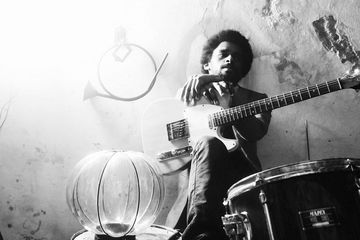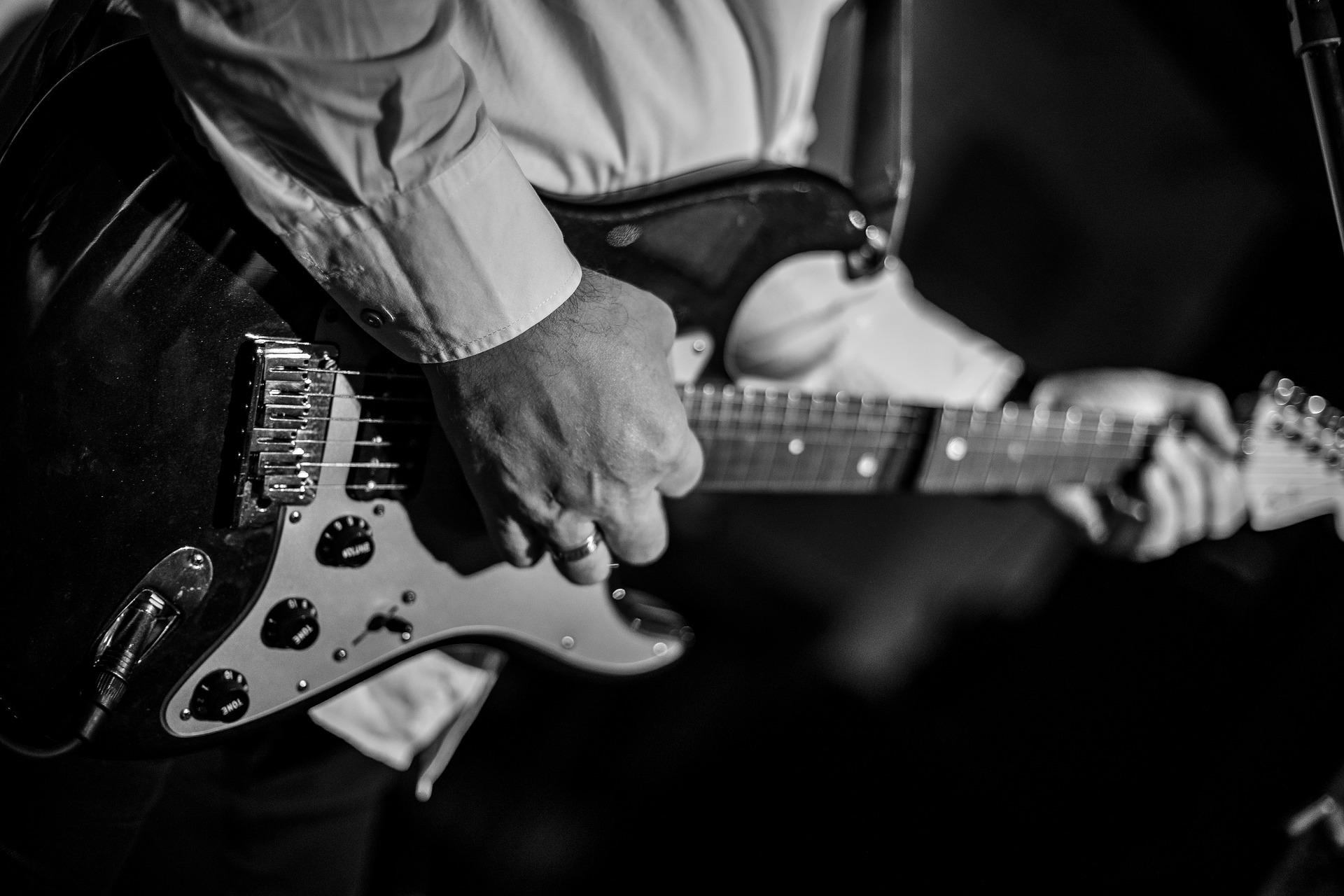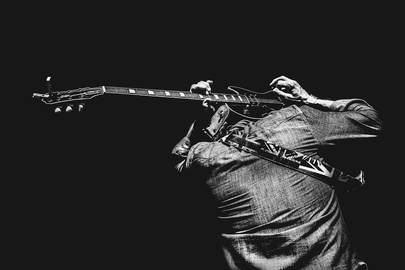It makes sense that to get different results, you can’t keep doing the same thing; something fundamental must change in the way you approach playing the scale in the first place. Since we’re going to stay within the scale pattern for this exercise, and we’re not approaching this from a theory perspective, we need to physically change what our fretting hand is doing.
Let’s take the A Major Scale to start with in its three-note-per-string (3NPS) guise.

3NPS scales are a great way to organize scale information on the fretboard, the only drawback (especially compared to a pentatonic scale) is that you have to put the work in to come up with phrases that sound musical, though they do lend themselves well to legato playing. By the way, if you want a more effective way to learn 3NPS scales, check out our free eBook.
Method 1 – Note Juggling
Take the above diagram and write the numbers one to seven randomly; there’s an example in the diagram below (you can write more than seven numbers if you like), then do the following drill:
-Play the numbers in order
-In reverse order
-Play the odd numbers
-Play the even numbers
This will force your fretting hand to do something other than rely on muscle memory, or play scales in a linear fashion, and you’ll come up with new ideas for phrasing and runs, and maybe even some new riffs.

Method 2 – Avoid the Root
This one is self-explanatory, so what you basically do is improvise while avoiding the root note for as long as possible, almost as if your scale pattern looked like the one below.

This is the same A Major Scale as the one above but with the root notes removed. Try it, you’ll be surprised at how much mileage you can get out of this one.
Method 3 – The Old School Interval Workout
If you’ve ever been to music college or had some kind of formal instruction, your teacher probably had you play scales in intervals, and this is another way to get your fretting hand out of its comfort zone. While this may seem tedious and lack some kind of instant gratification, it does wonders for your playing in the long run.
To practice this, I suggest you check out the excellent Ultimate Interval Workout over at Phil B’s guitar blog.



